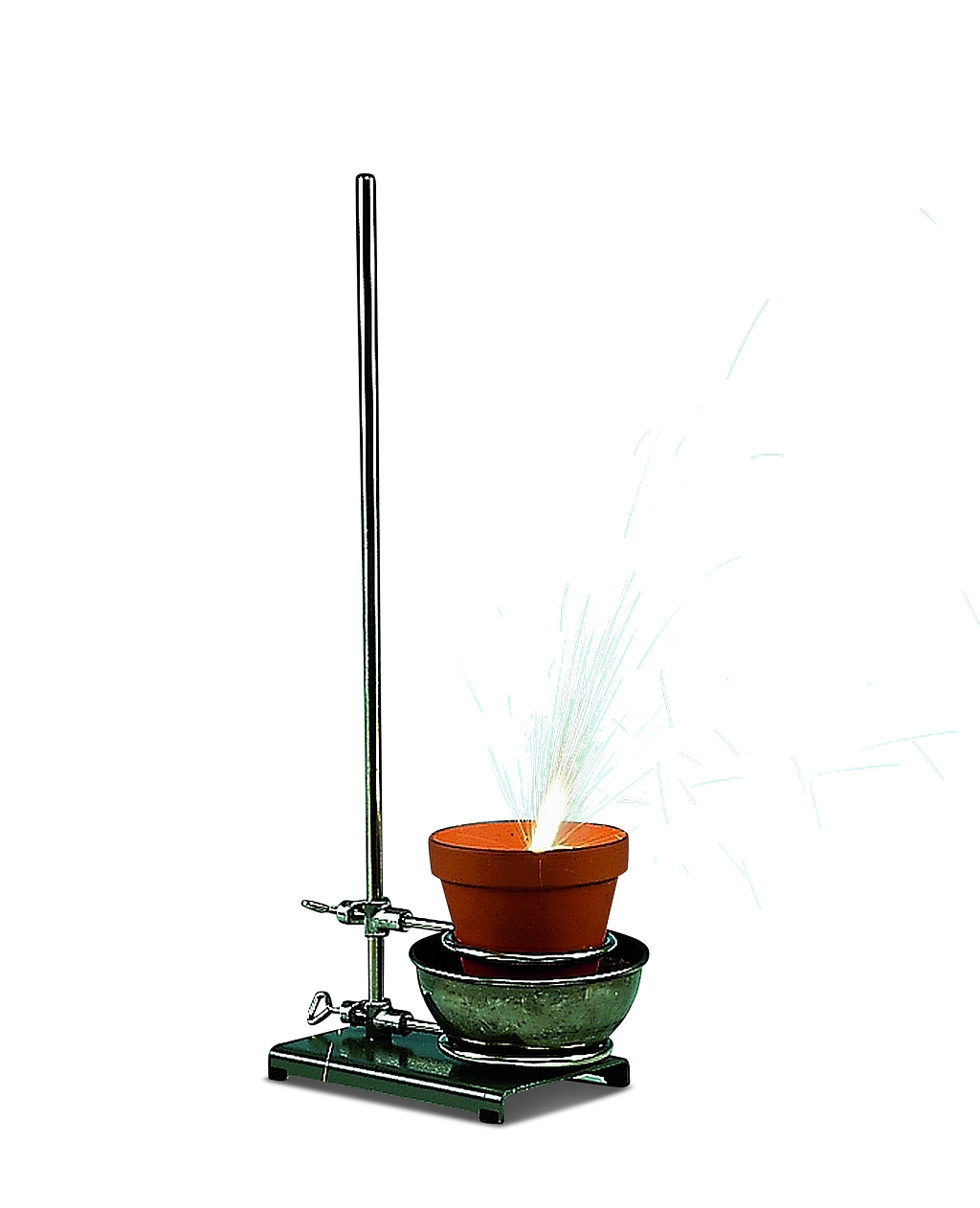Principle
The experiments described here are highly suitable for demonstrating the different affinity of various metals in view of oxygen. The less noble a metal is the higher its affinity to oxygen and the more thermal energy is released during its oxidation. The technical importance of the thermite process for the welding of iron parts is that it is relatively easy to produce large amounts of liquid iron and, thereby, to fill wider weld grooves. This is why this process is mainly used for welding thick steel beams, rail tracks, and machine parts.
Benefits
- Impressive experiment to the thermite process
- Precise weighting information ensures successful execution
Tasks
- Reduction of copper oxide with iron.
- Reduction of iron oxide with aluminium (thermite process, aluminothermics).
Learning objectives
- Redox reaction
- Thermite process
- Metals
- Welding of iron
- Aluminothermics
- Iron
- Aluminium
Necessary accessories
- Appropriate starter-match for a thermit-reaction (special thermit starter match, sparkler, magnesium-rod or a gas torch with propane and oxygen)
- Precision balance 620g/0.001g

